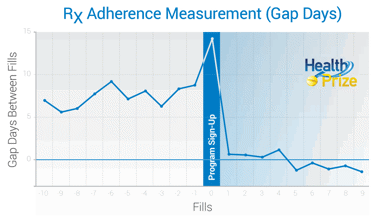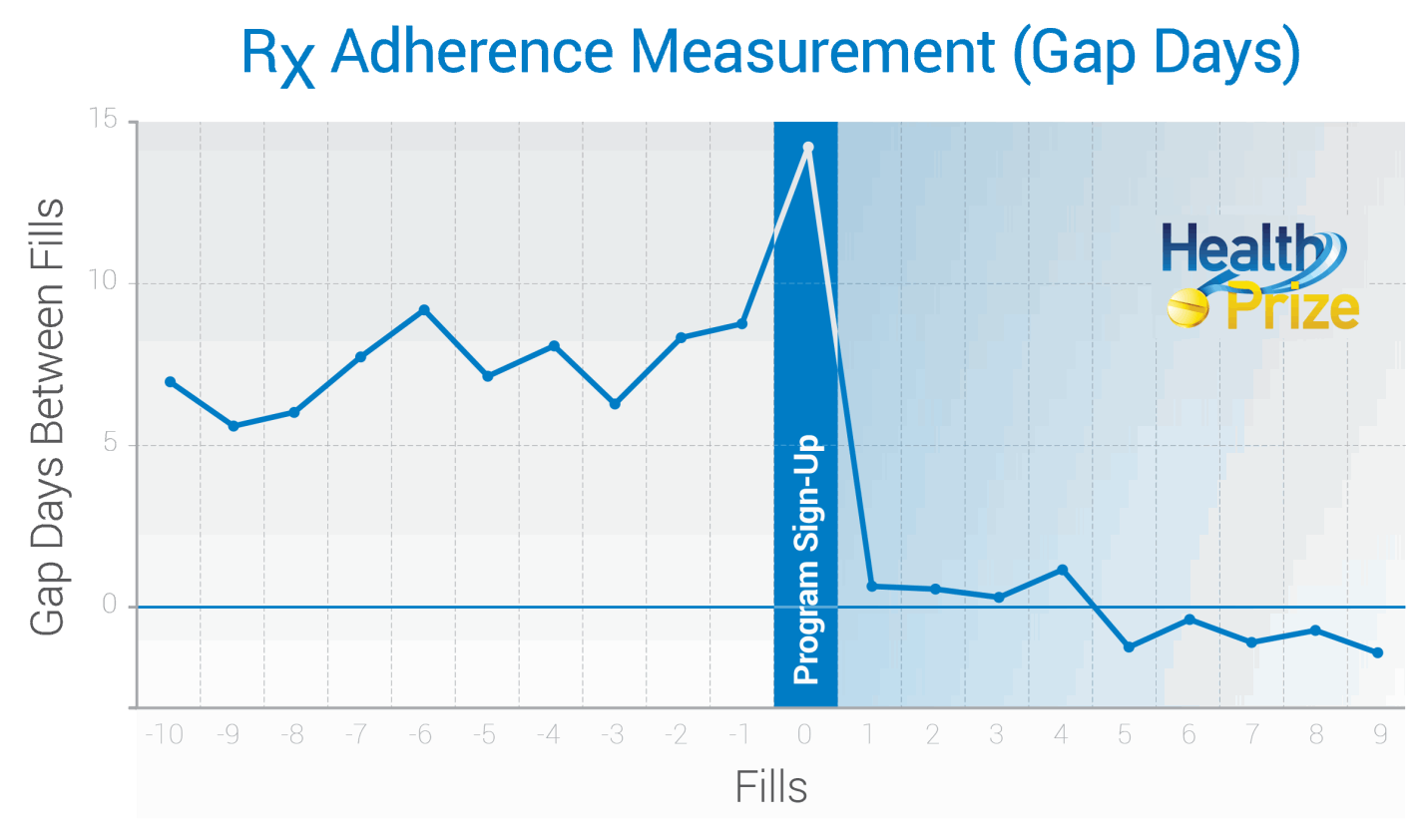Gamification: The Answer To Pharma's Non-Adherence Crisis?

By: Chris Evans and Eric Resnick
Pharma companies realize it takes more than developing a breakthrough drug to achieve breakthrough outcomes. With adherence rates at a shocking 50 percent for the chronically ill, an innovative solution is desperately needed. Engaging patients by applying game dynamics to adherence may be the solution. But, before you question whether this serious business of pharma is compatible with fun, consider the results: gamification techniques improve medication adherence rates by an average of 52 percent, according to HealthPrize Technologies.
“Adherence is an underserved area of medicine. Diagnosing a disease is the easy part. Getting a patient to ‘buy in’ to the treatment regimen to address the disease is difficult …”
— a physician respondent to a HealthPrize survey
The Current Situation
As self-injection becomes more common, solutions are needed to improve the overwhelmingly negative patient experience. The stakes are high. Low adherence rates for the chronically ill result in $637 billion annually in pharma revenue losses1, diminished patient outcomes, and $250 billion in US taxpayer funds wasted annually on avoidable retreatment costs.1
Meanwhile, in other industries, digital connectivity is transforming the consumer experience. Complex or non-preferred tasks (e.g., exercise, navigation, research, and standardized test preparation) have been transformed into easier, more convenient, and even fun experiences.
Digital technology can now improve the patient experience too, in ways that were just not possible before. But, to be effective, a digital solution needs to be much more than a simple “reminder to take medicine” application. Based on our learnings, a much broader and supportive ecosystem is needed. The successful system includes:
- Implementing early in clinical trials for critical learning about patient needs
- Surrounding patients with professional and peer support systems
- Answering patient questions on their timing, not just at doctor appointments< >Providing support over the patient’s lifecycle of the drug regimenAnticipating and meeting patients’ changing needs over time
- Gathering user data to learn how to better meet patient needs. For example, what questions do patients have and at what timing? How can we best train and provide information in anticipation of patient needs? When are patients in danger of becoming non-adherent and how can this be avoided?
“I want to thank you because I have learned a lot about myself and the quiz portion was my favorite. I have always believed that knowledge is power, in this case knowledge is also life.”
— HealthPrize member
Understanding The Barriers To Self-Injection
For many years, non-adherence has been treated as a cost or forgetfulness issue. This approach places the burden on the patient, and focuses only on two potential barriers. In reality, we have identified over 100 barriers that can negatively impact self-injection adherence. Anything that makes the injection experience negative will reduce adherence.
A few examples of barriers include: confusion about how to use the injector, pain or discomfort, side effects, needle anxiety, interruption of daily activities, and the lack of privacy.
With the large number of barriers, an effective solution must be multi-factorial and flexible enough to overcome complex psychological and motivational barriers. The barriers will vary by patient and even change over time. For instance, one person may need motivation to fill the prescription. Another person may need motivation to inject the medication. Still another may struggle to take the medicine as directed. Over time, the barrier(s) can change for a patient.
The importance of a well-designed injection device
At West, we are attacking the barriers by designing our injectors and the injection process to be as intuitive and patient-friendly as possible. With the larger doses and potentially longer injection times required for many biologic drugs, designing for comfort, convenience, and discreetness are important factors for patient adherence. Some of the barriers we can address with the injection device include:
- Reducing pain or discomfort by optimizing the rate of injection
- Reducing confusion about how to use the injection device by designing a more intuitive user interface
- Addressing patient needs for privacy, convenience, and comfort when self-injecting by designing wearable devices
- Reducing needle anxiety by adding a shield to hide the view of the needle
The true root of the adherence problem
“It really helped me stay on track and made me feel good about taking my meds. Having a chronic condition isn’t fun and is sometimes depressing, and this program gave me something to look forward to and made me feel a part of a group and less isolated.”
— HealthPrize member
While injector design improvements help overcome some of the device-based barriers, even the best systems are not enough to completely solve non-adherence. That is because the root of non-adherence is a behavioral issue. Changing behavior requires motivation. The promise of a long-term reward, such as improved health, is just not powerful enough to overcome the immediate barriers to injecting. Plus, the world of the chronically ill is filled with negativity. To change behavior, modern approaches must somehow introduce elements of positivity — even enjoyment — to increase the desire and improve the experience of taking a medication.
The Search For A Digital Solution
When West began to search for a digital solution in 2012, HealthPrize Technologies, a patient engagement software company, caught our attention. The HealthPrize approach was — and still is —disruptive. HealthPrize’s connected health programs incentivized chronic therapy patients with immediate gratification. The HealthPrize platform further motivated patients by meeting the human needs for belonging, esteem and accomplishment, and self-actualization.
How does the solution work?
The Web and mobile, app-based patient engagement software gamifies remembering to take drugs and refill prescriptions in a way that motivates patients both extrinsically (i.e., a tangible, physical reward) and intrinsically (i.e., intangible, self-gratifying). Instant rewards create a positive experience, reinforcing the process with targeted content at every dose and refill. Game-derived elements include a monthly leaderboard competition and weekly drawing. For example, when a patient adheres to his dose for three weeks, he can earn 10,000 points to redeem for gift cards with a physical value or charitable donations. Intrinsic motivators such as earning a spot on a leaderboard among peers in a
“I take medicine every day, your game made it exciting.”
— HealthPrize member
similar disease state introduce an element of competitiveness and self-motivation. The gamification approach has proven to be significantly more effective at improving adherence than other traditional, static educational formats used in the past.
Based on patient results in testing, West began an exclusive arrangement with HealthPrize to use the digital and HIPPA-compliant infrastructure to link West’s user-friendly injection devices and provide an ecosystem with the motivators that had long been lacking.
With the recent HealthPrize and Walgreens partnership, pharmaceutical companies can now achieve scale more quickly. Access to Walgreens’ 10 million daily in-store and online visitors eases recruitment of patients into the HealthPrize program.
Dispelling the Misperceptions
1. Legal and regulatory approval can be a stumbling block for some pharma companies. An unfounded concern is that giving patients something of value may equate to bribery. Many pharma companies, including half of the top 20, have tested and overcome the challenges of legal and regulatory reviews to implement a HealthPrize program.
2. Pharma companies may question whether the West and HealthPrize solution complements or conflicts with an existing digital engagement portal or program. The West and HealthPrize solution is flexible enough to provide a full end to end solution, or it can be customized for existing CRMs or digital portals.
In one example, the HealthPrize platform and user experience were adapted to seamlessly reside within an existing CRM program for a leading injectable diabetes medication franchise. The full case study can be found here.
3. For those who question the financial return of such a program, a modest improvement in adherence shows a demonstrable increase in revenue. Considering an average 52 percent increase in adherence over baseline, it becomes a very easy ROI calculation. Another way to evaluate financial impact is the reduction in “gap days,” or days late to refill. In a recent HealthPrize program for a cholesterol lowering medication, gap days were reduced by 99 percent as shown in the chart below. Additional details about this study can be found here.

Today, the West and HealthPrize partnership provides pharma companies with flexible, digital connectivity solutions. Pharma companies can choose a complete program, or add-on specific elements to complement an existing portal or proprietary digital program.
Based on patient success to date, this approach of combining an effective drug with an optimized injector and a better patient experience is a differentiator that can help pharma deliver breakthrough outcomes.
1. 2016 foreword to the white paper, Estimated Annual Pharmaceutical Revenue Loss Due To Medication Nonadherence, Capgemini Consulting and HealthPrize Technologies.
Click here to download the PDF version.
